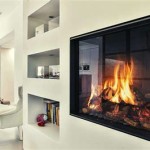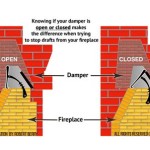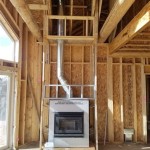Reclaimed Wood Mantel On Brick Fireplaces: A Synthesis of Rustic Charm and Timeless Design
The brick fireplace stands as a classic architectural element, often serving as the central focal point within a living space. Characterized by warmth, durability, and a sense of tradition, brick fireplaces have remained consistently popular across various design eras. Integrating a reclaimed wood mantel into this established structure introduces a captivating juxtaposition – blending the inherent ruggedness of salvaged wood with the inherent solidity and history of the brickwork. This combination creates a visually appealing and emotionally resonant aesthetic, transforming a standard fireplace into a personalized statement piece.
Reclaimed wood, by its very nature, carries a unique history. It may originate from deconstructed barns, factories, or even shipyards. Each piece bears the marks of its past life, exhibiting variations in texture, grain pattern, and coloration. This inherent imperfection is what lends reclaimed wood its distinctive charm. When paired with the structured uniformity of brick, the reclaimed wood mantel becomes a source of visual interest, softening the potentially rigid lines of the brickwork and adding layers of textural depth to the overall design.
Selecting the appropriate reclaimed wood for a mantel is a critical step in the process. Considerations must be given to the type of wood, its structural integrity, its dimensions, and its overall aesthetic compatibility with the existing brick fireplace. The goal is to select a piece that not only complements the brick but also enhances the fireplace’s overall presence within the room.
Considerations for Selecting Reclaimed Wood
The choice of reclaimed wood profoundly impacts the final appearance and functionality of the mantel. Several factors warrant careful evaluation to ensure a successful integration with the brick fireplace. These include wood species, moisture content, dimensions, structural soundness, and aesthetic characteristics.
The type of wood influences both the visual appeal and the structural performance of the mantel. Different wood species offer unique grain patterns, colors, and densities. For example, oak is known for its strength and distinctive grain, while pine often exhibits a more rustic appearance with knots and character marks. The specific species chosen should align with the desired aesthetic and the structural requirements of the mantel.
Moisture content is a crucial factor to consider, particularly for interior applications. Reclaimed wood that has not been properly dried can warp or crack over time as it acclimates to the indoor environment. Ideally, the wood should be kiln-dried to a moisture content appropriate for interior use, typically between 6% and 8%. This minimizes the risk of dimensional instability and ensures the long-term integrity of the mantel.
The dimensions of the reclaimed wood mantel must be carefully considered in relation to the size of the fireplace and the surrounding wall space. The mantel should be proportional to the fireplace opening and should not appear either too small or too large. The depth of the mantel also influences its functionality, providing a surface for displaying decorative items or supporting electronics.
Structural soundness is paramount. The reclaimed wood should be free from significant decay, insect damage, or other structural defects. Careful inspection is necessary to identify any areas of weakness that could compromise the integrity of the mantel. If necessary, reinforcing measures can be taken to strengthen the wood, such as adding hidden supports or applying a stabilizing epoxy resin.
Aesthetic characteristics play a vital role in achieving the desired visual effect. Reclaimed wood exhibits a wide range of colors, textures, and markings, reflecting its past life and exposure to the elements. The presence of nail holes, saw marks, and weathered surfaces can add character and authenticity to the mantel. The specific aesthetic characteristics chosen should complement the style of the brick fireplace and the overall decor of the room.
Installation Techniques for Reclaimed Wood Mantels
Proper installation is essential to ensure the safety, stability, and longevity of the reclaimed wood mantel. The installation process typically involves several steps, including measuring and marking, preparing the brick surface, attaching the mounting hardware, and securing the mantel in place.
Accurate measurements are critical for a precise fit. The dimensions of the fireplace opening and the surrounding wall space should be carefully measured to determine the appropriate size and placement of the mantel. Markings should be made on the brick surface to indicate the location of the mounting hardware.
Preparing the brick surface is essential for a secure attachment. The surface should be clean, dry, and free from loose debris. If necessary, the brick can be roughened slightly to improve adhesion. It is also important to ensure that the brick is structurally sound and capable of supporting the weight of the mantel.
Attaching the mounting hardware requires careful consideration of the weight and dimensions of the mantel. Various types of mounting hardware are available, including heavy-duty brackets, anchors, and screws. The chosen hardware should be appropriate for the type of brick and the weight of the mantel. It is also important to ensure that the hardware is properly aligned and securely fastened to both the brick and the mantel.
Securing the mantel in place involves carefully lifting the mantel and positioning it onto the mounting hardware. The mantel should be level and plumb, and any gaps between the mantel and the brick should be filled with caulk or shims. Once the mantel is properly aligned and secured, any exposed hardware can be concealed with decorative covers or trim.
The specific installation method will vary depending on the design of the mantel and the type of brick fireplace. Consulting with a qualified professional is advisable to ensure that the installation is performed correctly and safely.
Design Integration and Aesthetic Considerations
The successful integration of a reclaimed wood mantel with a brick fireplace extends beyond structural considerations and delves into the realm of design aesthetics. The choice of wood, its finish, and the manner in which it complements the surrounding decor are all critical to achieving a cohesive and visually appealing result.
The color and texture of the reclaimed wood profoundly influence the overall aesthetic. Lighter-toned woods tend to create a more airy and modern feel, while darker woods evoke a sense of warmth and tradition. The texture of the wood, whether smooth or rough-hewn, can also contribute to the overall character of the fireplace. Consider how the color and texture of the wood will interact with the color and texture of the brick.
The finish applied to the reclaimed wood can significantly alter its appearance. A clear finish preserves the natural beauty of the wood and allows its inherent character to shine through. A stained finish can enhance the wood’s color and grain pattern, while a painted finish can create a more contemporary or rustic look. The choice of finish should complement the style of the brick fireplace and the overall decor of the room.
The surrounding decor should harmonize with the reclaimed wood mantel and the brick fireplace. Consider the color palette, the furniture style, and the accessories used in the room. The goal is to create a cohesive and balanced design that reflects the homeowner’s personal style and preferences. Accessories such as candles, picture frames, and vases can be displayed on the mantel to enhance its visual appeal.
The architectural style of the home should also be taken into account. A reclaimed wood mantel can be successfully integrated into a variety of architectural styles, from traditional to contemporary. However, it is important to ensure that the mantel complements the overall design of the home and does not appear out of place.
Lighting plays a crucial role in highlighting the beauty of the reclaimed wood mantel and the brick fireplace. Consider adding recessed lighting above the mantel to accent its texture and color. A fireplace screen or glass doors can also enhance the visual appeal of the fireplace and provide an additional layer of safety.
Ultimately, the design integration of a reclaimed wood mantel with a brick fireplace is a highly personal process. The goal is to create a space that is both functional and aesthetically pleasing, reflecting the homeowner’s individual style and preferences. By carefully considering the various design elements and aesthetic considerations, it is possible to transform a standard fireplace into a stunning focal point that adds character and warmth to any room.

6 X Fireplace Mantel Made From Reclaimed Wood Rustic Farmhouse Brick Makeover White Wash

Hand Hewn Beam Fireplace Mantel 8x8 8 Foot Wood Elmwood Reclaimed Timber

Brick Fireplace Update Using Cement And Aged Wood Mantel

Build A Rustic Mantel From Reclaimed Wood Manatee Pants

Mantel Barn Beam Wooden 7 X 9 Rough Hewn Fireplace Rustic Wood

Resawn Reclaimed Wood Faux Beam Mantels

Diy Rustic Fireplace Mantel The Cure For A Boring

Other Craftsman Mantels Photos Whole Log Reclaimed Nc

Reclaimed Cherry Fireplace Mantel With Scarf Joint Antique Woodworks

Most Recent S Fireplace Mantels Concepts Blackfireplace Brickfireplace C Home Remodel Mantle Decor








